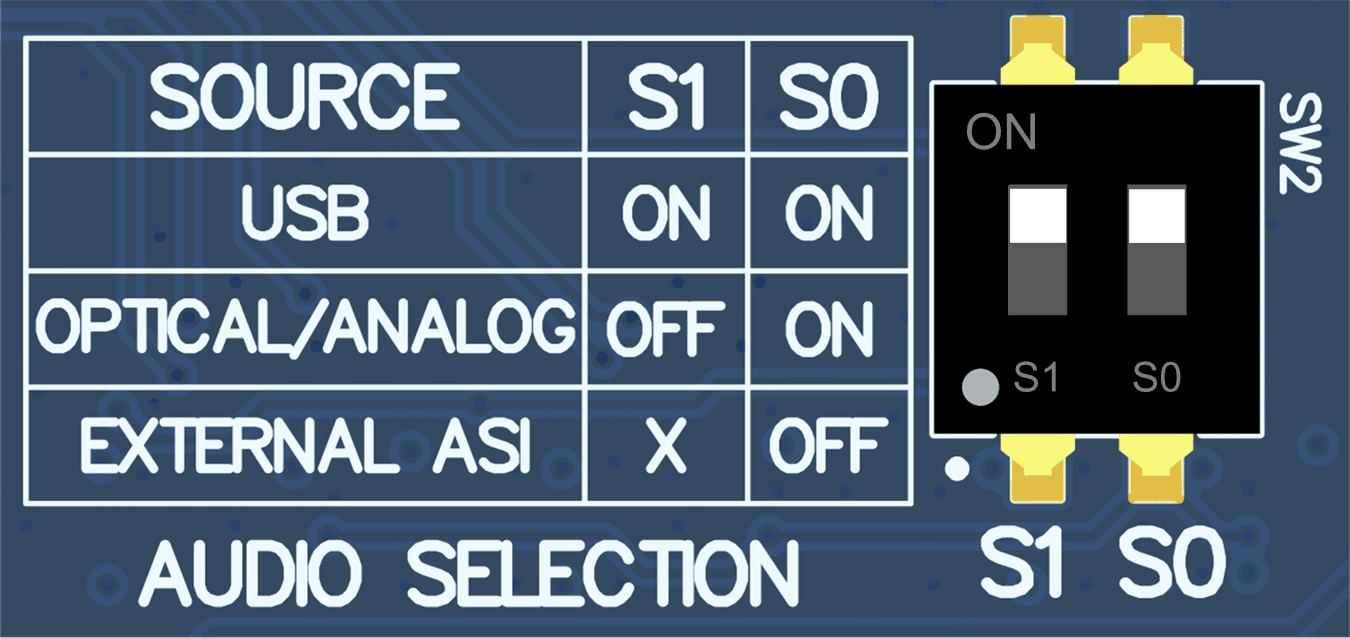SLAU936 August 2024 TAS2120
- 1
- Description
- Get Started
- Features
- Applications
- 6
- 1Evaluation Module Overview
- 2Quick Start Guide
-
3Hardware
- 3.1 AC-MB Settings
- 3.2 AC-MB Power Supply
- 3.3 Default Jumper Setting on TAS2120EVM
- 3.4 I2C Target Address Selection
- 3.5 IOVDD Power Supply Options
- 3.6 AVDD Power Supply Options
- 3.7 VBAT Power Supply Options
- 3.8 IOVDD_BUFF Power Supply Options
- 3.9 Speaker Outputs
- 3.10 2-Channel Configuration
- 3.11 4-Wire Measurement of Load
- 4Hardware Design Files
- 5Additional Information
3.1.2 USB Audio AC-MB Settings
The serial interface clocks and data are provided from the USB interface. The sampling rate and format are determined by the USB audio class driver on the operating system.
The default settings for the USB audio interface are 32-bit frame size, 48kHz sampling rate, BCLK and FSYNC ratio is 256, and the format is time division multiplexing (TDM).
The AC-MB is detected by the OS as an audio device with the name TI USB Audio UAC2.0. The AC-MB audio setting for the USB mode of operation is shown in Figure 3-2.
 Figure 3-2 AC-MB USB Audio Setting
Figure 3-2 AC-MB USB Audio Setting